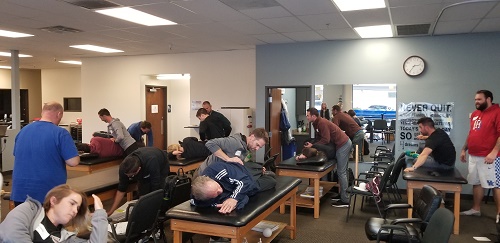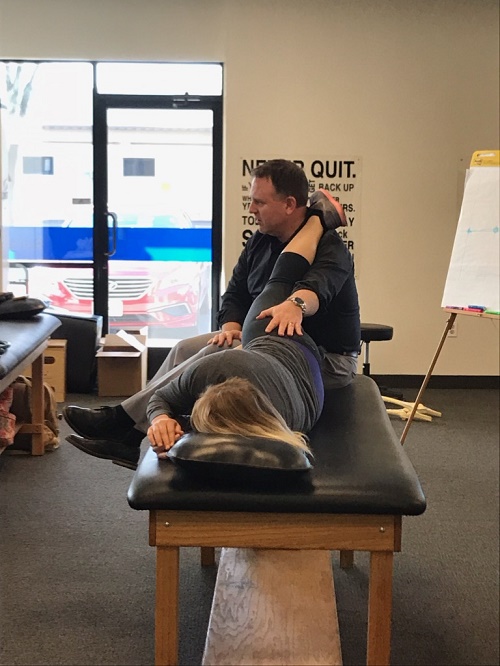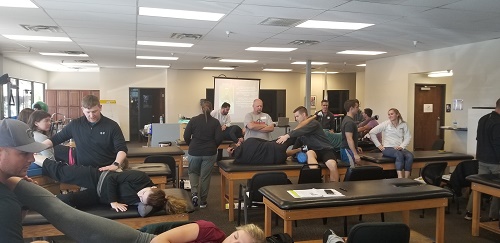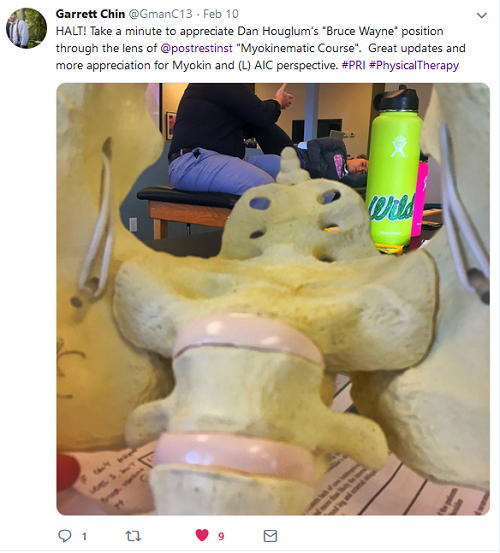Coming from the Polar Vortex, it was a refreshing respite to be in sunny Arizona for the first Myokinematic Restoration course of 2019. We were fortunate enough to have a very diverse class of attendees ranging from chiropractors, to strength coaches, to physical therapists working in various settings, to certified athletic trainers working with professional athletes.
Myokinematic Restoration is a fantastic course to kick-start one’s PRI journey. This was the rare introductory course where over half of the attendees had been to previous PRI courses. This provided us a unique opportunity to delve into other material that we wouldn’t otherwise be able to cover. We had excellent questions and excellent lab time as a result.

One of the topics that we were able to cover in this course that previous attendees appreciated was the Hruska Abduction Lift Test. This test is taught in depth in Pelvis Restoration as well, but for those who had attended Myokin previously, this was a new topic for them. Additionally, it provided the newcomers a chance to be able to appreciate how PRI integrates the gait cycle and breathing into treatment from beginning to end. We were also able to briefly touch on other topics, such as PEC management and rib cage IR, because of the previous experience of many of the attendees. However, we were also able to stay very on point and keep the course on track for those who were attending for the first time.

My thanks to Jim Wittekind, PT, PRC, for his help during lab and insightful discussion. The staff from 360 Physical Therapy, Becky Fox, Jennifer Peters, Krystina Leal, Caleb Walls, and Jason Roe, were perfect hosts. My thanks to Nathan Whitney, Ginsie Huntley, Liz Cash, Chris Burke, and Garrett Chin for their questions and discussion.

At the end of the day, we all need to be a little more like Bruce Wayne, and less like Batman. And we need to use our "good boy band" of muscles, instead of the "bad boy band" that the L AIC often puts us into. As a result of our conversation around normal mechanics vs. compensatory mechanics relative to the L AIC pattern, we were able to delve into how these analogies applied to our assessments and treatment approach. We were able to spend a lot of time on muscle activity as well as how to apply the Hruska Abduction and Adduction Lift tests into assessment and PRI non-manual activity selection.

We were blessed with a great group of movement professionals, and I was fortunate to be able to help them either continue or start their PRI journey. Thanks for a great weekend!


